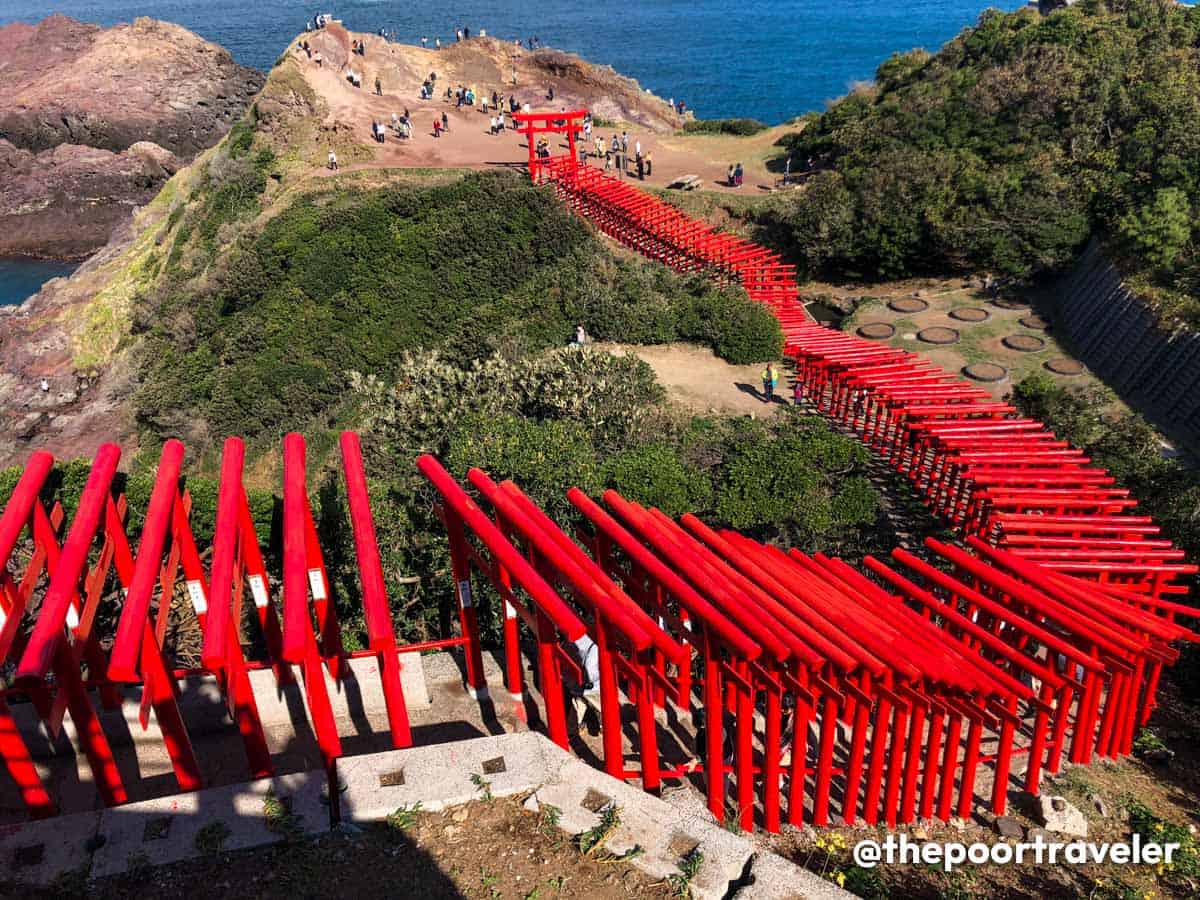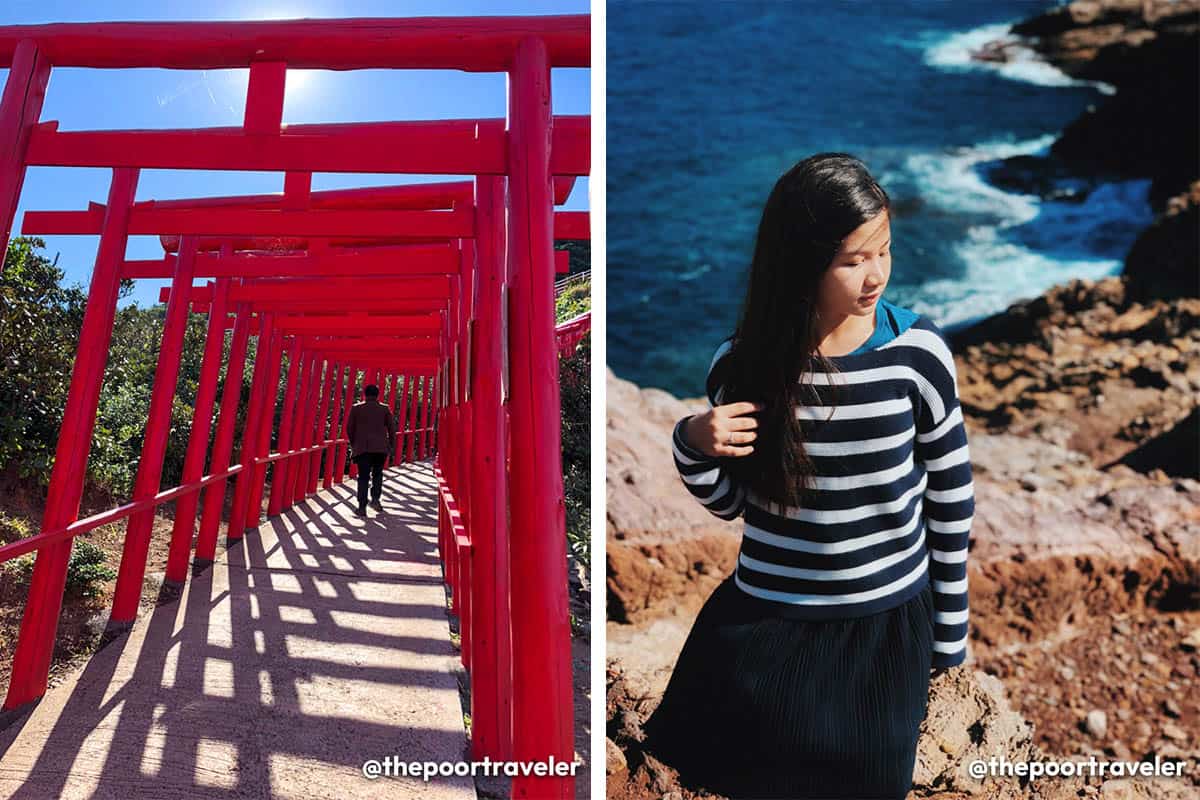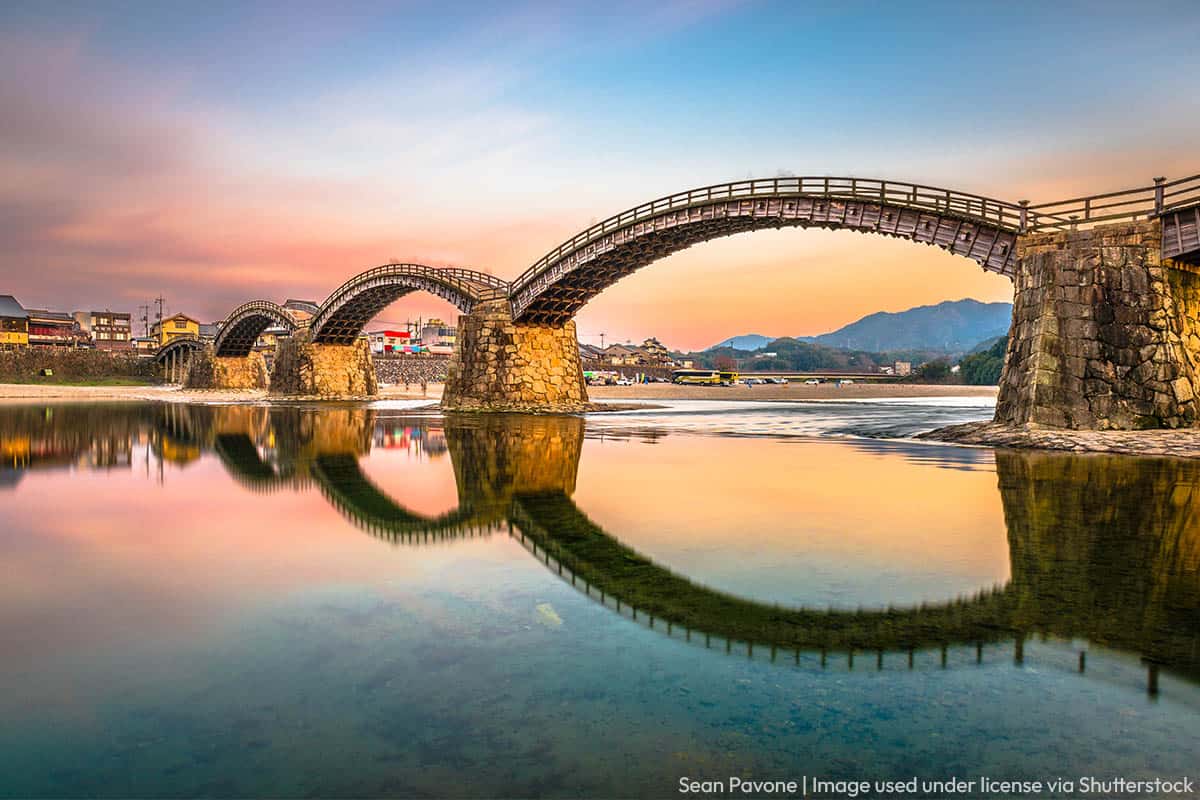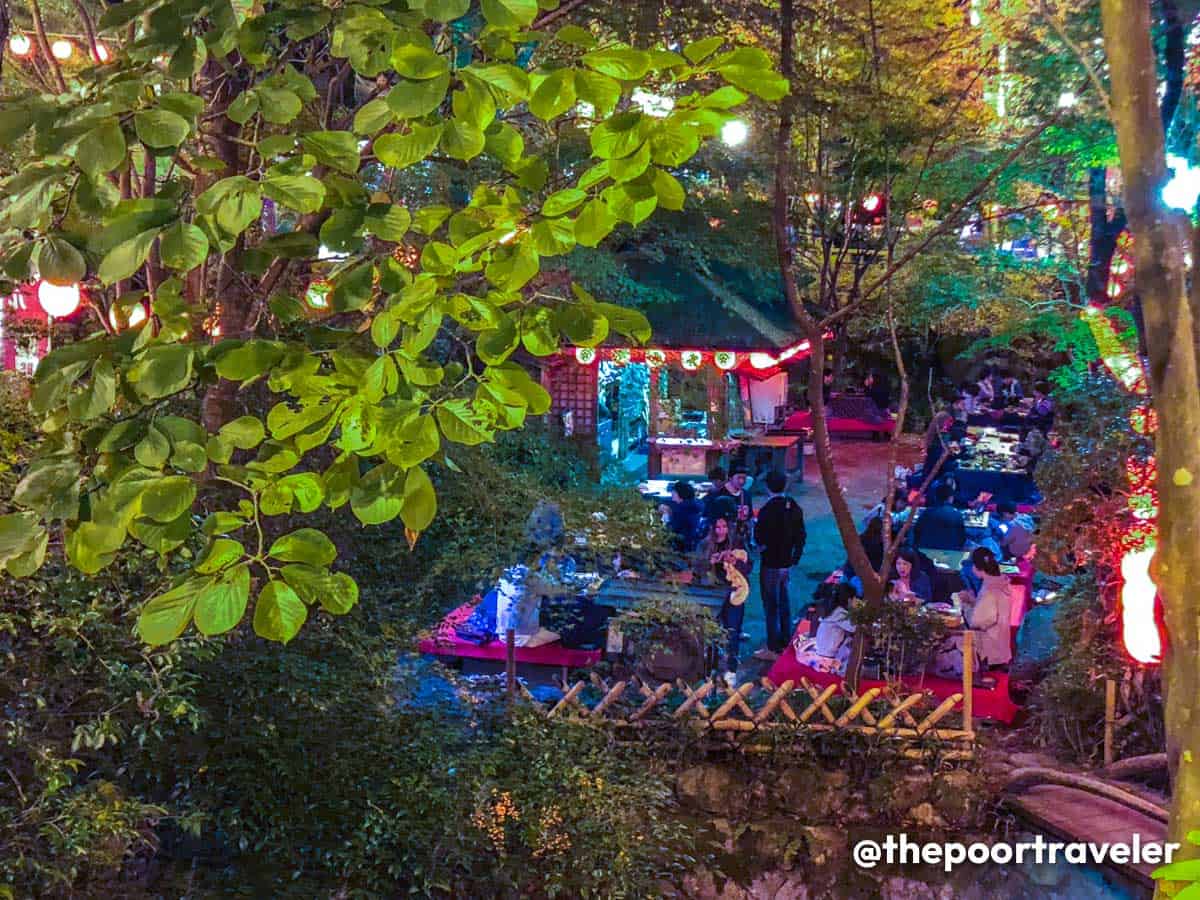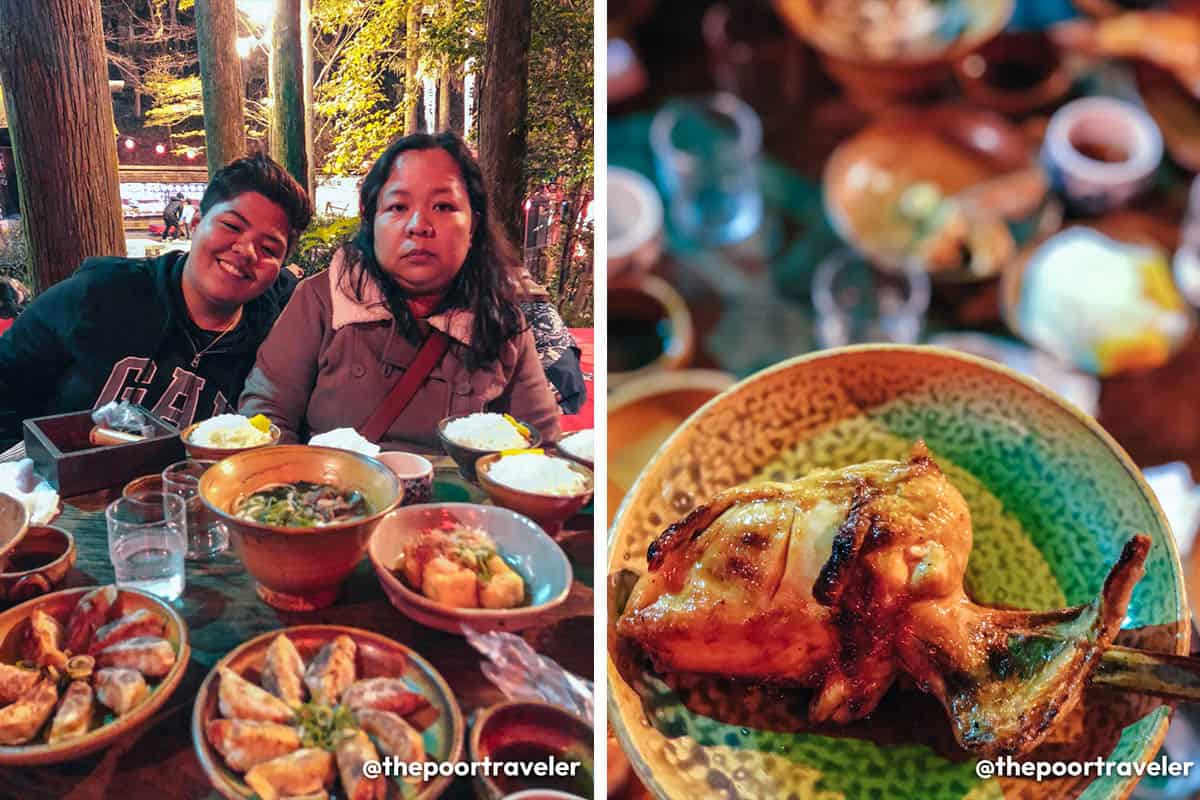YAMAGUCHI, JAPAN: 15 Best Things to Do & Places to Visit
[ad_1]

One of the best things about Japan is that it’s bursting with places to see and things to do wherever you go. It’s expected when it comes to global tourism favorites like Osaka and Tokyo. But even destinations that are virtually unheard of among international tourists also have so much to offer. Case in point: Yamaguchi.
Punctuating the southwestern tip of Honshu Island, Yamaguchi Prefecture is often overlooked in favor of its more recognizable neighbors — Fukuoka to the south and Hiroshima to the north. Most travelers coming from Fukuoka Airport on their way to Hiroshima usually just breeze through it without giving it a second look. This is why Yamaguchi often surprises visitors.
The prefecture’s history has a strong link to the samurai ruling class. Today, it is one of the most industrialized prefectures in the country. It attracts tourists to its lush natural parks, coasts, and cultural sites. The most popular destinations are Yamaguchi City, Shimonoseki, Iwakuni, Hagi City, and the Akiyoshidai Quasi-National Park.
If you are adding Yamaguchi in your itinerary, here are some of the things to do and places to visit.
WHAT’S COVERED IN THIS GUIDE?
Adorning the coast of Yuyatsuo in the coastal city of Nagato in the north, Motonosumi Inari Shrine is included in CNN Travel’s list of “31 Most Beautiful Places in Japan.”. Its most striking feature is the path of red torii gates leading to the coast and the rock formations below. The contrasting deep red color of the traditional torii gates against the green woods and the blue waters of the Sea of Japan is a sight to behold.
The construction of the shrine started in 1987, forming a tunnel of 123 torii gates crawling from the hilltop entrance down the rocky coast. But the most notable of them all is the tallest one with an offertory box perched high above. Visitors believe that their wish will be granted if they successfully toss a coin into the box.
Another attraction in the vicinity is the Ryūgū Wave Splash, just a few meters from the last torii gate at the base.
Location: 498 Yuyatsuo, Nagato, Yamaguchi Prefecture 759-4712, Japan
Opening Hours: 5:30 AM – 5:30 PM (Daily). Basically, the shrine is open from sunrise to sunset, so hours miht differ.
Admission: FREE
Nearest Station: Nagato-Furuichi Station or Hitomaru Station. Note that you might need to hail a taxi because access to the shrine via public bus is very challenging and limited.
Official Website: www.motonosumi.com
On the northwest coast of Yamaguchi Prefecture, a scenic bridge stretches 1,780 meters over Amagaseto Strait, connecting the mainland to Tsunoshima Island, a resort island off the coast of Shimonoseki. Curving slightly to avoid the spot occupied by a small uninhabited island (Hato Island), the bridge is hailed as the second-longest in Japan.
Officially opened in November 2000, the bridge starts at Hōhoku in Shimonoseki. Both ends of the bridge are adorned by parks — Amagase Park in Shimonoseki and Sezakiyono Park on Tsunoshima Island.
Although tourists cannot cross the bridge on foot, the scenic drive is one of its draws aside from the attractions on the island. Amagase Park in Shimonoseki features the Tsunoshima Observatory and other viewpoints.
Location: Hohokucho Oaza Tsunoshima, Shimonoseki, 〒759-5332 Yamaguchi, Japan
Nearest Station/Stop: Shimonoseki Station, Takibe Station, Hotel Nishinagato Bus Stop
Situated northwest off the coast of Yamaguchi Prefecture, the island is under the jurisdiction of Shimonoseki and is part of the Kita-Nagato Kaigan Quasi-National Park. Before the construction of the Tsunoshima Bridge, the island was linked to the mainland by ferry. The bridge contributed largely to the island’s tourism industry by making it a lot easier to access.
Some of the Tsunoshima Island’s points of interest are Shiokaze Cobalt Blue Beach, Tsunoshima Ohama Beach, Tsunoshimaohama Camping Ground, Tsunoshima Lighthouse, Makizakikazeno Park, and other parks.
The island is also a popular film and ad shooting location. Camping and sports fishing are some of the common activities on the island.
Location: Hohokucho Oaza Tsunoshima, Shimonoseki, Yamaguchi 759-5332, Japan
Nearest Station/Stop: Shimonoseki Station, Takibe Station, Kottoi Station, Tsunoshima Bus Stop
Originally constructed in 1673 leading to the main gate of Iwakuni Castle, the Kintai Bridge is one of the most remarkable historic landmarks in Yamaguchi.
Part of the Kikkou Park, the bridge stretches about 200 meters in length and crosses over Nishiki River. It is well-known for its series of five wooden arches supported by four stone piers and two wooden piers on each end of the bridge. It underwent several reconstruction over the years. It was recognized as a National Treasure in 1922.
Kikkou Park is a popular hanami (flower viewing) spot during the cherry blossom season and momiji (Japanese maples) viewing destination during the autumn season.
Location: Iwakuni, Yamaguchi 741-0062, Japan
Opening Hours: Bridge 24/7; Ticket Booth 8:00 AM – 6:00 PM (Summer), 8:00 AM – 5:00 PM (Winter). If you visit outside the ticket booth operating hours, kindly drop your payment in the toll/ticket box provided. Note that the opening schedule might change, so check for updates and announcements prior to your visit.
Admission: ¥310 (Adults), ¥150 (Children)
Nearest Station/Stop: Nishi-Iwakuni Station, Iwakuni Station, Kintaikyo Bus Stop
Official Website: www.kintaikyo.iwakuni-city.net
Also part of the Kikkou Park, Iwakuni Castle is nestled on Mount Yokoyama, overlooking the city and the Seto Inland Sea. Commissioned by Kikkawa Hiroie to serve as his official residence, the original castle was completed in 1608. However, it was demolished in 1615 following the Tokugawa Shogunate’s policy of “one castle per province.”
The current four-story structure dates back to 1962. The castle also hosts a collection of samurai-related artifacts.
From Kikkou Park, you can reach the castle either on foot or via ropeway.
Location: 3 Chome Yokoyama, Iwakuni, Yamaguchi 741-0081, Japan
Opening Hours: Castle 9:00 AM – 4:45 PM (Daily); Ropeway 9:00 AM – 5:00 PM (Daily), CLOSED (Inspection/Maintenance Day). Note that the opening schedule might change, so check for updates and announcements prior to your visit.
Admission: ¥270 (Adults), ¥120 (Children)
Nearest Station/Stop: Nishi-Iwakuni Station, Iwakuni Station, Kintaikyo Bus Stop
Official Website: www.kankou.iwakuni-city.net
While in the Kikkou Park area, don’t miss Iwakuni’s popular specialty dish — Iwakuni sushi. In form, this layered pressed sushi (oshizushi) looks like a savory cake.
There may be variations but the original basic ingredients are sushi rice, Iwakuni Renkon lotus root, denbu (or fresh fish), thinly sliced eggs, and mushrooms. These ingredients are then pressed together using a wooden sushi mold. The sushi is served by slicing the “sushi cake” into small pieces by layer.
It’s sold and served at restaurants and stalls in Kikkou Park, particularly around the Kintai Bridge area.
WARNING: This is not for the indecisive! But if you have so much time on your hands, then enjoy browsing through the menu boards for the ice cream flavor that will catch your interest.
You may go for the classic flavors or the odd one if you are feeling bold. A hundred flavor of ice cream might be a bit overwhelming, right? No worries! There are lists of ice cream flavors grouped by category: bestsellers, seasonal limited flavors, special flavors, and new flavors. Flavors are also categorized per ice cream base: fruit-based, tea-based, and more.
Musashi Ice Cream is located at the other end of the Kintai Bridge. Look for the second establishment to your left facing Kikkou Park. The price range for the regular flavor soft-serve ice cream is ¥200 – ¥400.
Location: 2 Chome-1-23 Yokoyama, Iwakuni, Yamaguchi 741-0081, Japan
Opening Hours: 9:00 AM – 4:30 PM (Monday, Wednesday – Sunday); CLOSED (Tuesdays). Note that opening hours might vary and change without prior notice.
Price Range: ¥200 – ¥400 (Regular Flavors)
Established in 1955, the Akiyoshidai Quasi-National Park is a protected area covering about 45 square kilometers of karst plateau and vast grassland.
The park’s most famous feature is the Akiyoshidō, the longest cave in Japan and one of the longest in Asia. The cave spans almost nine kilometers in length,; however, only about one kilometer is accessible to the public for sightseeing. The cave tour entails traversing a walkway and bridge system and an artificial elevator. Inside are dozens of rock formations that can capture your imagination.
Aside from Akiyoshidō, there are over 400 more limestone caves in the park. The park also includes the Akiyoshidai Groundwater System, which was declared as a Ramsar Site and wetland of international importance. There are several hiking routes within the park leading to scenic spots. There’s a visitor center, the park headquarters, a natural history museum, a rest house, and a youth hostel. The park is managed by the local prefectural government.
Highlights: Akiyoshidō, Akiyoshidai Karst Lookout, Akiyoshidai Eastern (Chōjagaminé) Viewing Platform, Kanzan, Chōjagamori, Jigokudai, Kaerimizu, Karst Road, Mt. Wakatake, Mt. Nishinonishi
Location: Mine, Yamaguchi 754-0602, Japan
Opening Hours: General Park Area 24/7; Akiyoshidai Tourist Info Center 8:30 AM – 5:00 PM; Akiyoshidō 8:30 AM – 5:30 PM (March – November), 8:30 AM – 4:30 PM (December – February). Note that the opening schedule might change, so check for updates and announcements prior to your visit.
Admission: Akiyoshidō ¥1,300; General Park Area FREE. You may explore on your own or you may book one of the tours if you want to be accompanied by a local guide. Fees apply for guided tours.
Nearest Station/Stop: Akiyoshidō Bus Terminal, Mine Station. If you are not a fan of walking and hiking, you may hail a Karst Taxi which operates within the park.
Official Website: www.akiyoshidai-park.com
Onsen (natural hot spring) culture is strong in Japan. It is one of the defining customs that locals still religiously practice. The experience may be shocking to first timers, but for the locals, it is a way of life.
Onsen baths are extremely famous for their health benefits. There are numerous onsen towns and villages in Japan, but this one in Yamaguchi has a mystical background. According to legends, a white fox came to the Kumano Shrine and dipped its wounded paw into the shrine’s pond and eventually healed.
Today the Yudaonsen District in Yamaguchi City is littered with fox statues and fox-themed enterprises like restaurants, souvenirs, and more. The Yudaonsen Station is dominated by a giant statue of the white fox to commemorate the district’s symbol. The natural spring baths are known for its alkaline waters. There are many onsen establishments in the district, but it is also offered by ryokans and hotels.
If you are too shy to try, opt for one of the six free foot bath facilities instead.
Location: Yudaonsen, Yamaguchi City, Yamaguchi Prefecture, Japan
Nearest Station: Yudaonsen Station
Hagi was an affluent castletown during the Edo Period. It is the seat of the Mori clan, one of the most prominent and powerful clans in Japan during that period. The Mori lords ruled over the present-day Yamaguchi for over 250 years. The Hagi Castle serves as their official residence of the lords. The castle grounds also served as home to the samurai, merchants, and craftsmen.
Today, the city of Hagi still exudes the traditional vibe of the old castle town. The former castle was constructed at the foot of a hill (Mount Shizukiyama), adjacent to Kikugahama Beach at the edge of the city. Only the castle ruins remain on the site today, while the castle town in the city center today used to be the area where the samurai and commoners settled. The castle town flaunts well-preserved structures such as old merchant houses and former samurai mansions.
Highlights: Castle Ruins, Kikugahama Beach, Edoya Yokocho, Kuchiba Residence, Kubota Residence, Kido Takayoshi Residence, Kikuya Residence, Hagi Museum and other museums, Enseiji Temple
Location: 1 Chome, 呉服町 Hagi, Yamaguchi 758-0072, Japan
Nearest Station: Higashi-Hagi Station. From the station, you can ride the Maru Bus or go there on foot, which will take you approximately 30 minutes. If you are into cycling, you can explore Hagi by renting a bike at the station.
Dating back to the late 15th century, Ruriko-ji is one of the main attractions in Yamaguchi. The Buddhist temple boasts a five-story pagoda, hailed as one of the three greatest pagodas in Japan.
The pagoda is the oldest structure within the temple grounds, existing already even before the foundation of the temple as an institution. The complex encompasses the main hall, a bell tower, a museum, and a temple storehouse.
Ruriko-jo is located within Kozan Park, which also houses the Mori Clan burial site and the historically significant tea house, Chinryutei.
Location: 7-1 Kozancho, Yamaguchi, 753-0081, Japan
Opening Hours: Temple Grounds 24/7; Pagoda 9:00 AM – 5:00 PM (Daily). Note that the opening schedule might change, so check for updates and announcements prior to your visit.
Admission: Temple Grounds FREE; Pagoda ¥200
Nearest Station/Stop: Yamaguchi Station, Kenchomae Bus Stop. From the station, you can ride a bus or walk there (about 40 minutes). Bicycle rentals are available at the station too if you are interested.
Literally translated to “Bandit’s Hearth”, Irori Sanzoku is a famed restaurant in Yamaguchi, known for serving fares that are said to be those eaten by sanzoku (bandits). The most popular on the menu are Sanzoku musubi (large rice ball), Sanzoku-yaki (hearty grilled chicken), Sanzoku udon, and Sumeragi beef.
The local restaurant chain has six branches of restaurants in three areas: three in Kuga, two in Nishiki, and one in Shuto. The architecture and design of the restaurants strongly identify with traditional Japanese structures and themes.
Location: Kuga, Nishiki, and Shuto, Yamaguchi, Japan
Opening Hours: Sanzoku 10:00 AM – 12:00 AM, CLOSED (Tuesdays & Holidays); Kamado 10:00 AM – 12:00 AM, CLOSED (Wednesdays); Tourian 10:00 AM – 12:00 AM, CLOSED (Thursdays); Sanzoku-toride 10:00 AM – 10:00 PM, CLOSED (Thursdays); Ittousen 10:00 AM – 10:00 PM, CLOSED (Wednesdays); Oimatsu 10:00 AM – 12:00 AM, CLOSED (Thursdays). Note that the opening schedule might change, so check for updates and announcements prior to your visit.
Official Website: www.irori-sanzoku.co.jp
Located at the Kamon Wharf in Shimonoseki, the Karato Fish Market is a huge market noted for its fresh seafood and a myriad of choices for sushi, sashimi, donburi, and other culinary delights.
For the adventurous, care for some fugu (puffer fish), one of the most dangerous fish to be consumed? Shimonoseki is hailed as the Puffer Fish Capital of the World. One of Japan’s most celebrated (but notorious) dishes, fugu is usually served as a hotpot or as sashimi.
When you are done stuffing your face with fresh seafood, head over to the boardwalk for a relaxing and picturesque view of the Kanmon Straits.
Location: 5-50 Karatocho, Shimonoseki, Yamaguchi 750-0005, Japan
Opening Hours: 5:00 AM – 3:00 PM (Monday – Saturday), 8:00 AM – 3:00 PM (Sundays). Note that the opening schedule might change, so check for updates and announcements prior to your visit.
Nearest Station/Stop: Shimonoseki Station, Karato Bus Stop (via Sanden Kotsu Bus)
Official Website: www.karatoichiba.com
Just a few hundred meters northeast of Karato Fish Market, Akama-Jinju Shrine is a waterfront Shinto shrine facing the Kanmon Straits. Inspired by Ryūgū-jō, an undersea palace in Japanese folklore, its bright red main gate draws attention to the shrine. Established in the 1191, the shrine was dedicated to the young emperor Antoku, who perished by drowning during the Battle of Dan-no-ura in 1185.
Other notable features of the shrine aside from the bright red main gate are the Hoichi Hall and the Nanamori-zuka, the burial site of the Taira clan warriors.
Location: 4-1 Amidaijicho, Shimonoseki, Yamaguchi 750-0003, Japan
Opening Hours: 24/7
Admission: Shrine grounds FREE. Note that enetring the halls may incur minimal fee.
Nearest Station/Stop: Shimonoseki Station, Akamajinjumae Bus Stop
Kawara Soba is the Yamaguchi Prefecture’s very distinct local cuisine. Concocted by Shinichi Takase, the founder of the Kawara Soba Takase restaurant, it has warmed the belly of locals since 1962, eventually becoming the specialty of the Kawatana Onsen District.
Kawara Soba is composed of green tea soba, thinly sliced egg, seweed, beef, grated daikon, chili, and lemon slices. It is usually paired with the restaurant’s signature soba soup with bonito flakes and Kombu. But what made the dish distinct is cooking and serving it using the Japanese Kawara (roof tile).
Kawara Soba Takase Official Website: www.kawarasoba.jp.
[ad_2]
Source link

